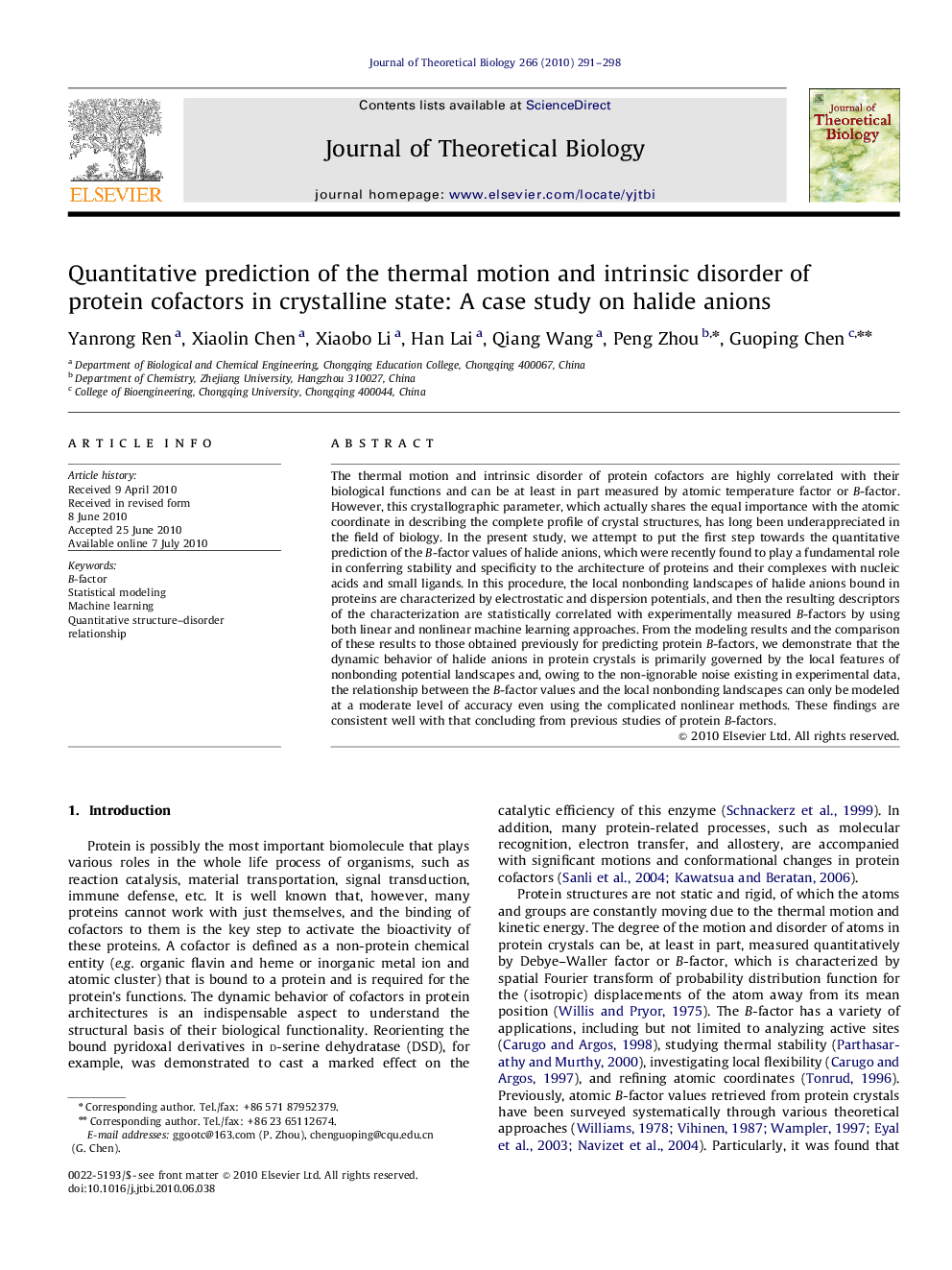| Article ID | Journal | Published Year | Pages | File Type |
|---|---|---|---|---|
| 4497505 | Journal of Theoretical Biology | 2010 | 8 Pages |
The thermal motion and intrinsic disorder of protein cofactors are highly correlated with their biological functions and can be at least in part measured by atomic temperature factor or B-factor. However, this crystallographic parameter, which actually shares the equal importance with the atomic coordinate in describing the complete profile of crystal structures, has long been underappreciated in the field of biology. In the present study, we attempt to put the first step towards the quantitative prediction of the B-factor values of halide anions, which were recently found to play a fundamental role in conferring stability and specificity to the architecture of proteins and their complexes with nucleic acids and small ligands. In this procedure, the local nonbonding landscapes of halide anions bound in proteins are characterized by electrostatic and dispersion potentials, and then the resulting descriptors of the characterization are statistically correlated with experimentally measured B-factors by using both linear and nonlinear machine learning approaches. From the modeling results and the comparison of these results to those obtained previously for predicting protein B-factors, we demonstrate that the dynamic behavior of halide anions in protein crystals is primarily governed by the local features of nonbonding potential landscapes and, owing to the non-ignorable noise existing in experimental data, the relationship between the B-factor values and the local nonbonding landscapes can only be modeled at a moderate level of accuracy even using the complicated nonlinear methods. These findings are consistent well with that concluding from previous studies of protein B-factors.
